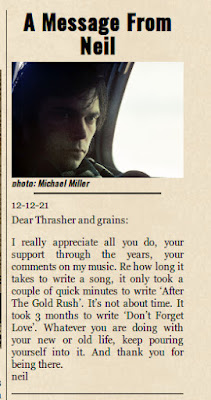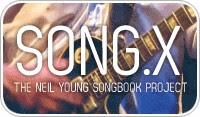The power of Neil Young’s “Ohio” in 2018: Why the Kent State protest anthem remains so relevant | Salon
Neil Young
Almost 50 years ago -- on May 4, 1970 -- shots rang out across a college campus, leaving four dead in Ohio and the lives of so many of a generation changed forever by the events of that day.
From The power of Neil Young’s “Ohio” in 2018: Why the Kent State protest anthem remains so relevant | Salon by Annie Zaleski:
But the very act of covering "Ohio" — which the headline of a 2010 The Guardian article dubbed the "greatest protest record" — feels especially poignant in 2018. Written by Neil Young after seeing a Life magazine story about the May 4, 1970, massacre of four students at Kent State University by members of the Ohio National Guard, "Ohio" retains its power.Full article at The power of Neil Young’s “Ohio” in 2018: Why the Kent State protest anthem remains so relevant | Salon by Annie Zaleski.
Besides grappling with the implications of the horrific event, the song expresses anger, disbelief, shock — and an irrevocable sense of betrayal, that those in power are now officially an enemy, actively working against the will of the people and resorting to violence to quash dissent. The simple, dateline-like lyric "Four dead in Ohio," which repeats throughout, cements the song's inspiration, ensuring that those killed are never forgotten.
The specificity of that line also ensures the Kent State massacre isn't forgotten. "A large part of the reason many people know about Kent State as they do is because the song 'Ohio' brings it to people who are not necessarily researching the Nixon era," journalist Dorian Lynskey told The Atlantic in early 2018. But unlike many protest songs, which feel inextricably tied to their time, "Ohio" transcends eras. While originally written about one particular incident, the song eventually came to reflect much greater truths about violence, power dynamics and oppression.
Its themes especially feel resonant in a post-2016 election world, with a news cycle dominated by stories of an administration hostile to historically marginalized communities — including (but not limited to) immigrants, the LGBT community, black Americans, the disability community and women. "Ohio" also has deep ire for senseless violence and expresses feeling helplessness while watching someone innocent become collateral damage — sentiments that are certainly familiar to the current movement against gun violence.
More on our take on that fateful day 47 years ago at Kent State and Crosby Stills Nash & Young's "Ohio", the importance of Singing Truth to Power and answering THE Question: "We're The Ones We've Been Waiting For".
Labels: Crosby Stills Nash Young, neil young, ohio


































 Human Highway
Human Highway

















 Concert Review of the Moment
Concert Review of the Moment





 This Land is My Land
This Land is My Land

 FREEDOM In A New Year
FREEDOM In A New Year









 *Thanks Neil!*
*Thanks Neil!*




![[EFC Blue Ribbon - Free Speech Online]](http://www.thrasherswheat.org/gifs/free-speech.gif)











 The Unbearable Lightness of Being Neil Young
The Unbearable Lightness of Being Neil Young Pardon My Heart
Pardon My Heart



 "We're The Ones
"We're The Ones  Thanks for Supporting Thrasher's Wheat!
Thanks for Supporting Thrasher's Wheat!




 This blog
This blog 
 (... he didn't kill himself either...)
#AaronDidntKillHimself
(... he didn't kill himself either...)
#AaronDidntKillHimself









































































 Neil Young's Moon Songs
Neil Young's Moon Songs




 Civic Duty Is Not Terrorism
Civic Duty Is Not Terrorism Orwell (and Grandpa) Was Right
Orwell (and Grandpa) Was Right


 What's So Funny About
What's So Funny About 



4 Comments:
Good to see Croz looking so well.
We should be looking forward instead of back! Hippies!!!!!
@ Jim - sometimes we do need to look back to look forward. So if you think you can handle the truth... The Day The Music Died ...
Hey Jim
Some'a the best people i've known were 'hippies' back in the day.
And some'a the best people i know are hippies today, though you'd never know it just by lookin' at'm
....... there's a great deal more to 'hippy' than patchouli ......... be the Rain, buddy.
Post a Comment
<< Home